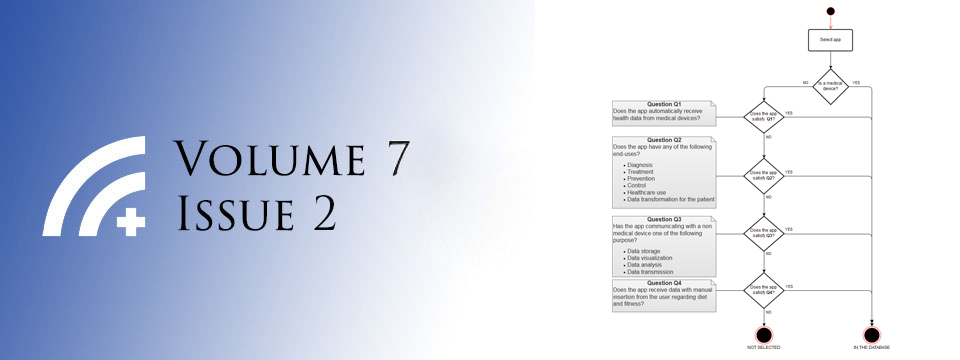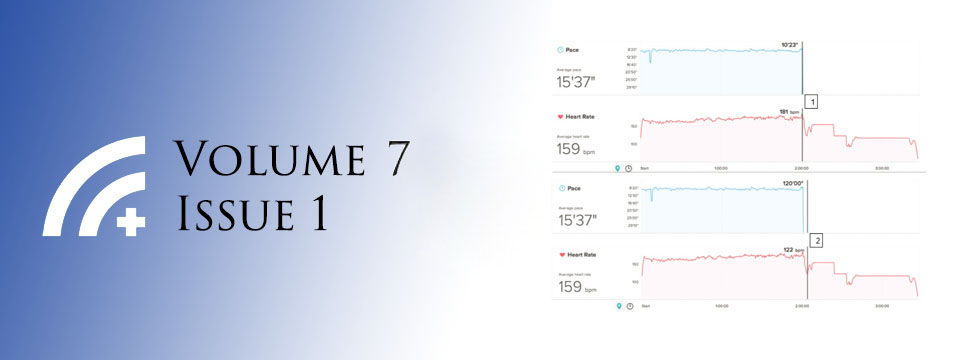Posted on Oct 14, 2015 in Perspective Pieces |
Jordan Koll1, Gregory Hansen, MD, MPH2
1Public Health Agency of Canada, Winnipeg, Manitoba, Canada; 2Department of Pediatrics, University of Manitoba, Winnipeg, Manitoba, Canada
Corresponding Author: Gregory.Hansen@umanitoba.ca
Journal MTM 4:3:32–34, 2015
doi:10.7309/jmtm.4.3.6
Within Health Delivery Organizations (HDOs), leaders, information technologists and privacy officers have been focused on the acquisition, implementation, and security of enterprise Electronic Medical Record (EMR) systems. Unfortunately the investment of money, human resources and time is at the expense of addressing daily physician workflow complexities. To optimize patient centered care, we must unshackled the physician from the EMR desktop and move them closer to the patient. For this reason, physicians should engage with key stakeholders to identify the financial, legal, administrative and human resource challenges of delivering efficient workflow solutions alongside the deployment of enterprise EMRs.
Posted on Oct 14, 2015 in Case report |
Prof. Sanjiv Kumar Gupta1, Dr. Ajai Kumar2, Dr. Arun Sharma1, Dr. Siddharth Agrawal1, Dr. Vishal Katiyar1
1Department of Ophthalmology, King George’s Medical University, Lucknow, U.P., India; 2Jan Kalyan Eye Hospital, A-1040, Indira Nagar, Lucknow, U.P., India
Corresponding Author: sanjiv204@gmail.com
Journal MTM 4:3:39–42, 2015
doi:10.7309/jmtm.4.3.8
Video recording and still photography is an essential component for documenting surgical and clinical details. Additionally videos have important role in skill transfer, demonstration of new procedures, and as material of clinical evidence. We here describe the use of an Android smartphone, (HTC Incredible S) for capturing High Definition (HD) video of ocular surgery through the assistant observer scope of an operating microscope.
We have described the arrangement used to mount the smartphone to microscope and discussed the advantages and limitations of this arrangement when compared to a conventional capturing and recording system used with the operating microscope.
Posted on Oct 14, 2015 in Editorial |
Dr. Rahul Chakrabarti, Dr. Chandrashan Perera
Journal MTM 4:3:1, 2015
doi:10.7309/jmtm.4.3.1
Dear Audience,
It is with great pleasure that the editorial board presents in the third issue of the Journal for this year a glimpse of the potential for virtual reality (VR) environments in patient care. In the current issue, Lehman1 and colleagues discuss the current capabilities and limitations of virtual reality environments in assessing the safety of patients in a spectrum of “real-world” settings. The authors highlight poignant examples of VR in simulating complex tasks of personal and social activities of daily living such as shopping, behavior control, memory and attention. Whilst these examples give a glimpse of the current capacity of VR, there remain questions regarding the validity and sensitivity of methods to test these applications. As discussed by the authors, the major foreseeable challenge is the ability of VR devices to remain sensitive to the tasks performed, whilst having the external validity to test the device against a broad range of contexts and situations.
Posted on Oct 13, 2015 in Perspective Pieces |
Leigh A. Lehman, PhD
Center for Innovation on Disability and Rehabilitation Research, 151-B, NF/SG VA Medical Center, 1601 SW Archer Road, Gainesville, Florida 32608, USA
Corresponding Author: lalehman@phhp.ufl.edu
Journal MTM 4:3:26–31, 2015
doi:10.7309/jmtm.4.3.5
The Potential Value of Virtual Environments (VEs) in Rehabilitation
Virtual Environments (VEs) are computer-generated immersive, interactive simulations.1 These controlled settings can be designed to enable assessment and training of a wide variety of daily tasks, including those that are difficult to practice in the real-world for practical and safety reasons.2,3 The use of VEs has attracted increased interest as shown by increasing publications in the realm of rehabilitation. VEs are especially promising in the area of rehabilitation of instrumental activities of daily living (IADLs).4 Despite this recent growth in research, the use of these technologies lacks the validation necessary to establish them as standard practices in rehabilitation. Given the growing use and potential of VEs in rehabilitation, there is a need for specific guidelines to be established for the validity testing of these constructs.
Posted on Oct 13, 2015 in Original Article |
Chan Jan-Bond1, Teh Wee-Min1, Ng Hong-Kee1, Ik Zu-Quan2, Sonny-Teo Khairy-Shamel1, Embong Zunaina1, Ahmad-Tajudin Liza-Sharmini1
1Department of Ophthalmology, School of Medical Sciences, Universiti Sains Malaysia, Kubang Kerian, Kelantan, Malaysia; 2Department of Computer Science and Networked System, Faculty of Science and Technology, Sunway University, Bandar Sunway, Selangor, Malaysia
Corresponding author: janbond@hotmail.com
Journal MTM 4:3:20–25, 2015
doi:10.7309/jmtm.4.3.4
Objectives: To determine the agreement and correlation of visual acuity between Rapid Eye Screening Test (REST) app and Early Treatment Diabetic Retinopathy Study (ETDRS) tumbling ‘E’ chart.
Methods: A visual acuity tool was designed for Android and iOS users based on ETDRS. A pilot study was conducted involving 101 subjects. Visual acuity of each subject was tested using ETDRS chart and crossover to REST at 3 meters or vice versa.
Results: Mean visual acuity using ETDRS was 0.086 ± 0.194 for right eye (RE) and 0.085 ± 0.196 for left eye (LE) while REST measurement was 0.091 ± 0.182 for RE and 0.098 ± 0.203 for LE. There was significant and strong direct correlation between visual acuity using ETDRS and REST in both eyes (RE: r = 0.829; p < 0.001, LE: r = 0.871; p < 0.001). The 95% limits of agreement between the two charts was ±0.11 LogMAR for right eye and ±0.10 LogMAR for left eye. Time taken for REST was significantly shorter than ETDRS (p < 0.001).
Conclusion: REST is accurate and time-saving, thus potentially ideal for mass screening in remote area.
Posted on Oct 13, 2015 in Original Article |
Kelly M. Collins1,2, Daniela Abramovitz1, Meredith C. Meacham1,2, Patricia E. Gonzalez-Zuniga1, Kevin Patrick3,4, Richard S. Garfein1
1Division of Global Public Health, Department of Medicine, School of Medicine, University of California, San Diego, La Jolla, CA, USA; 2Graduate School of Public Health, San Diego State University, San Diego, CA, USA; 3Department of Family and Preventive Medicine, University of California, San Diego, La Jolla, CA, USA; 4CALIT2, University of California, San Diego, La Jolla, CA, USA
Corresponding author: rgarfein@ucsd.edu
Journal MTM 4:3:13–19, 2015
doi:10.7309/jmtm.4.3.3
Background: Persons who inject drugs (PWID) are at high risk for hepatitis C virus (HCV) and human immunodeficiency virus (HIV) infection, particularly in Tijuana, Baja California, Mexico, where HCV prevalence among PWID is above 95%. PWID also demonstrate low access and use of health services. mHealth intervention tools may prove effective for reducing disease risk and increasing access to health services for PWID. However, knowledge of cell phone access within this population is needed before designing such interventions.
Methods: We aimed to determine the prevalence and correlates of cell phone access among PWID enrolled in the ‘El Cuete’ cohort study in Tijuana. Participants were asked for detailed contact information at baseline—including a cell phone number if available—to facilitate retention. Interviews obtained socio-demographic data, health information, and lifetime/recent drug and sexual risk behaviors. Logistic regression was used to assess factors independently associated with providing a cell phone number.
Results: Of 735 participants enrolled, 16% of participants had access to a cell phone at baseline. Mean age was 37 years old, ranging from 18–63. Sixty two percent of participants were male, 96% were Hispanic, and 27% reported recent homelessness. Higher education and a monthly income≥2500 pesos were associated with higher odds of cell phone access. Inversely, homelessness, daily injection drug use, and older age were associated with lower odds of cell phone access.
Conclusions: Cell phone access among PWID in Tijuana is low and should be considered in the design of mHealth interventions targeting this population.










